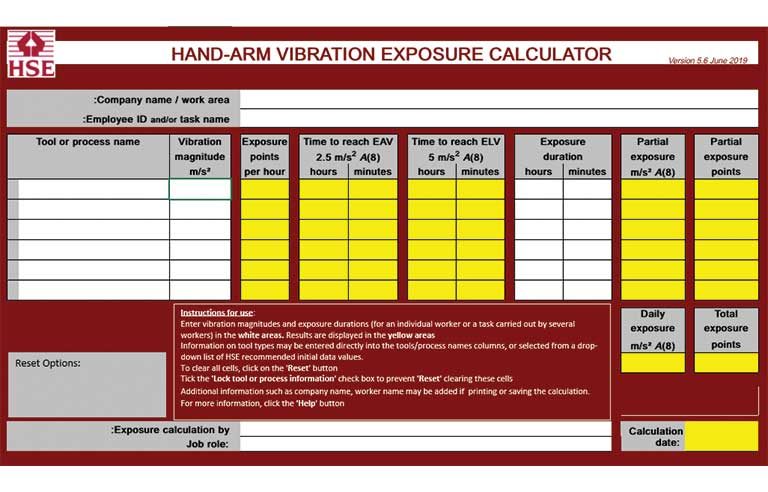UK agency updates tool used to determine hard-arm vibration exposure

Bootle, England — Great Britain’s Health and Safety Executive, which regulates and enforces workplace safety and health, has updated a calculator intended to help determine worker exposure to hand-arm vibration.
Functional through a downloadable Microsoft Excel spreadsheet, the tool now allows users to enter vibration magnitude and duration for up to six machines or work processes. Vibration magnitudes for common tools such as drills, grinders, nail guns and saws are included. Partial and daily exposure values are calculated from this input.
Additionally, the tool computes the number of exposure points for each hour of exposure time per machine or process, total exposure time required before the exposure action value is reached, and total exposure time required before the exposure limit value is reached.
“Some of the presentation has changed to permit the recording of more information relevant to each exposure estimate made,” an HSE spokesperson wrote in an email to Safety+Health. “There has been no change to the basic calculations.”
Workers who regularly use power tools are at risk of hand-arm vibration exposure, as well as hand-arm vibration syndrome, which NIOSH calls “a collective term for vibration-induced neurological, vascular and musculoskeletal disorders in the hand-arm system.” The risk remains regardless of whether the tool is powered by electricity, gasoline or air, NIOSH states.
To reduce the risk of HAVS, OSHA recommends:
- Using damping techniques or vibration isolators on equipment.
- Keeping machines and tools in proper working order.
- Alternating between vibrating and nonvibrating tools.
- Allowing workers to take 10- to- 15-minute breaks each hour.
- Educating workers on vibration hazards and best practices for limiting exposure.
- Advising workers to keep their hands warm and dry and to grip tools lightly.
Post a comment to this article
Safety+Health welcomes comments that promote respectful dialogue. Please stay on topic. Comments that contain personal attacks, profanity or abusive language – or those aggressively promoting products or services – will be removed. We reserve the right to determine which comments violate our comment policy. (Anonymous comments are welcome; merely skip the “name” field in the comment box. An email address is required but will not be included with your comment.)

